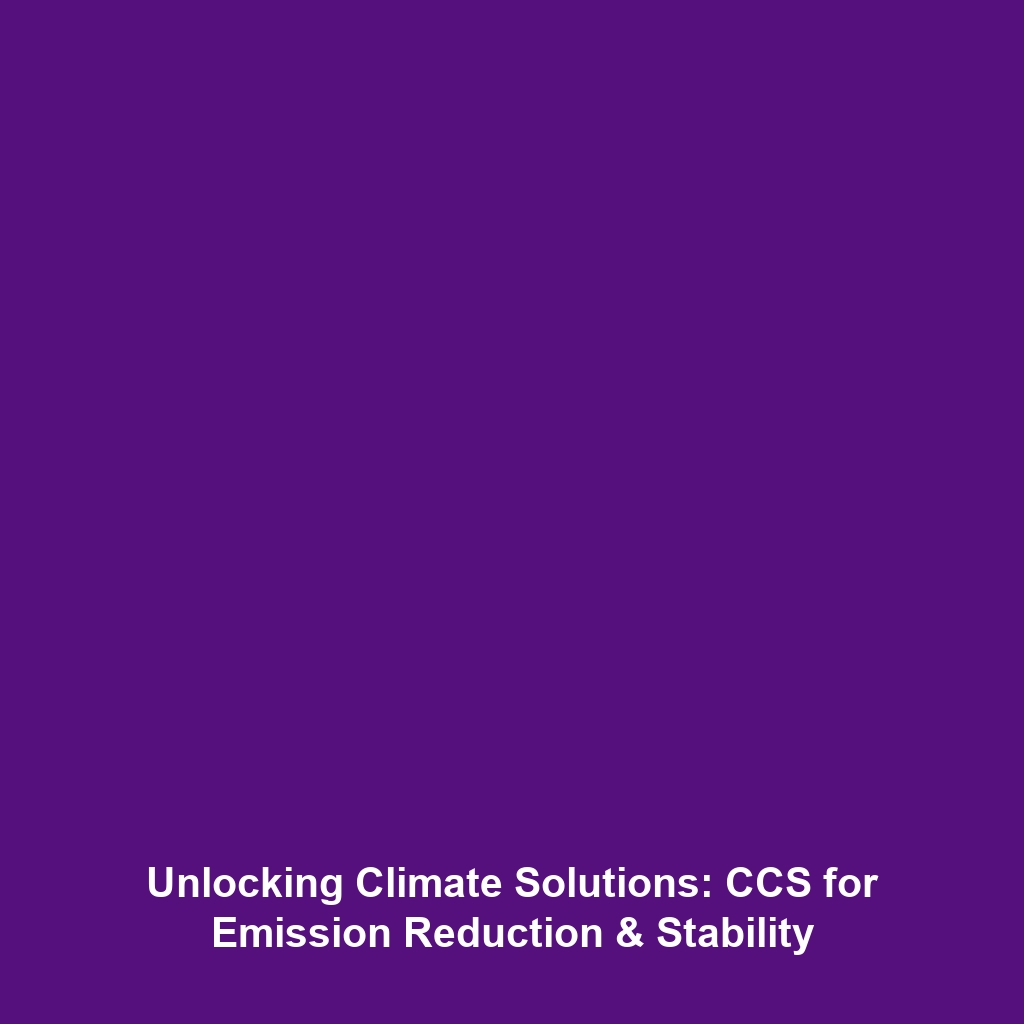Advances in Capture Technologies for Carbon Capture & Storage (CCS)
Introduction: As global efforts to combat climate change intensify, advances in capture technologies play a crucial role in optimizing Carbon Capture & Storage (CCS) methods. Innovations such as membrane-based CO2 separation and direct air capture (DAC) are designed not only to capture carbon dioxide more efficiently but also to reduce the overall costs and energy consumption associated with these processes. This article explores the significance of these technologies within the broader context of environmental sustainability and their potential impacts on our future.
Key Concepts in Advances of Carbon Capture Technologies
The evolution of capture technologies, especially membrane-based CO2 separation and direct air capture (DAC), showcases several key concepts:
- Membrane-Based CO2 Separation: Utilizes selective permeable membranes to separate CO2 from other gases in industrial processes, making it a more energy-efficient alternative.
- Direct Air Capture (DAC): Involves capturing atmospheric CO2 using chemical processes, allowing for the removal of greenhouse gases directly from the air.
- Cost Reduction: Advances focus on reducing the financial barriers associated with CCS technologies, ensuring wider accessibility.
- Energy Efficiency: Innovations aim to lower the energy requirements involved in CO2 capture, making it more sustainable.
Applications and Real-World Uses of Capture Technologies
Understanding how advances in capture technologies are applied in Carbon Capture & Storage (CCS) reveals their importance in real-world scenarios:
- Power Generation: Power plants are increasingly deploying membrane technologies to reduce their carbon footprints.
- Industrial Processes: Manufacturing industries utilize direct air capture to offset emissions from production activities.
- Carbon Utilization: Captured CO2 can be repurposed for creating products like fuels, chemicals, and building materials.
Current Challenges in Advancements of Capture Technologies
Despite the significant progress in capture technologies, several challenges remain:
- High initial capital costs for implementing new technologies.
- Energy-intensive processes that can counteract the benefits of capture.
- Limited scalability of certain direct air capture technologies.
- Public perception and regulatory hurdles that can impede widespread adoption.
Future Research and Innovations in Capture Technologies
Looking ahead, research and innovations in membrane-based CO2 separation and direct air capture (DAC) are focused on:
- Next-Generation Membranes: Development of advanced materials that enhance selectivity and permeability.
- Integration with Renewable Energy: Combining DAC with renewable energy sources to mitigate energy consumption.
- Cost-Effective Solutions: Ongoing development of economically feasible processes that can be scaled effectively.
Conclusion
Advances in capture technologies, such as membrane-based CO2 separation and direct air capture (DAC), are pivotal for the future of Carbon Capture & Storage (CCS). By addressing challenges and innovating continuously, these technologies can contribute significantly to global carbon reduction efforts. For those interested in further exploring related topics, visit our sections on Emerging CCS Trends and Renewable Energy Integration.

Leave a Reply